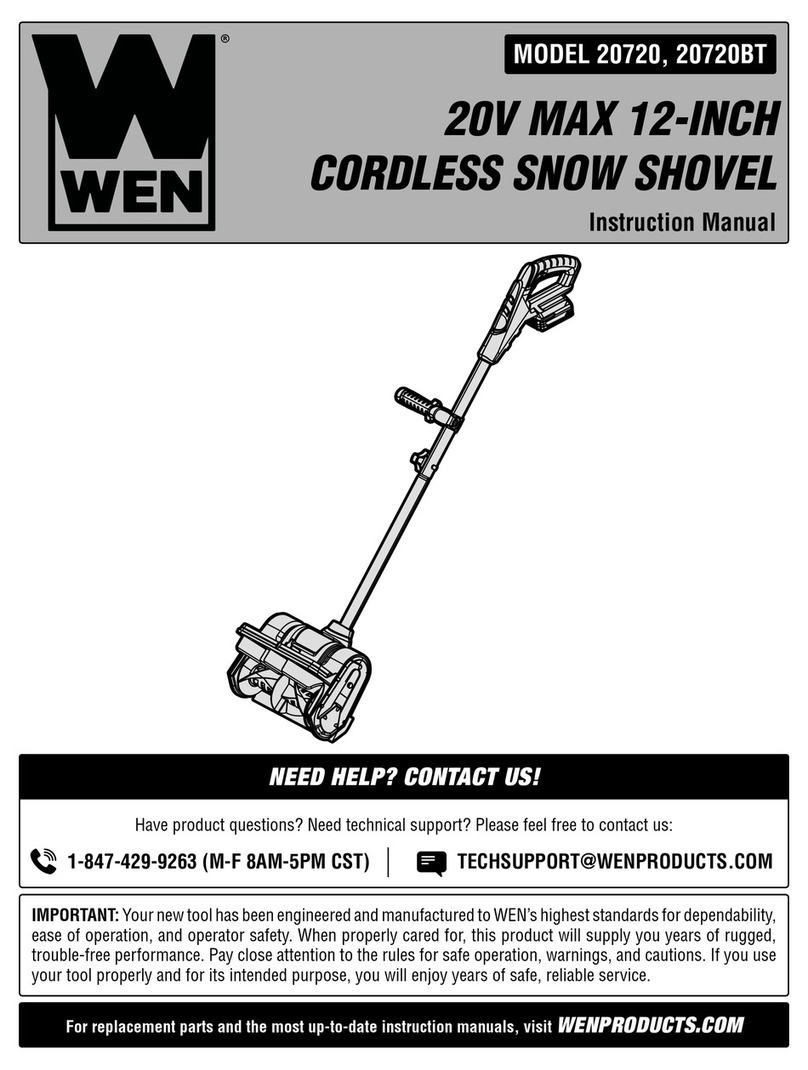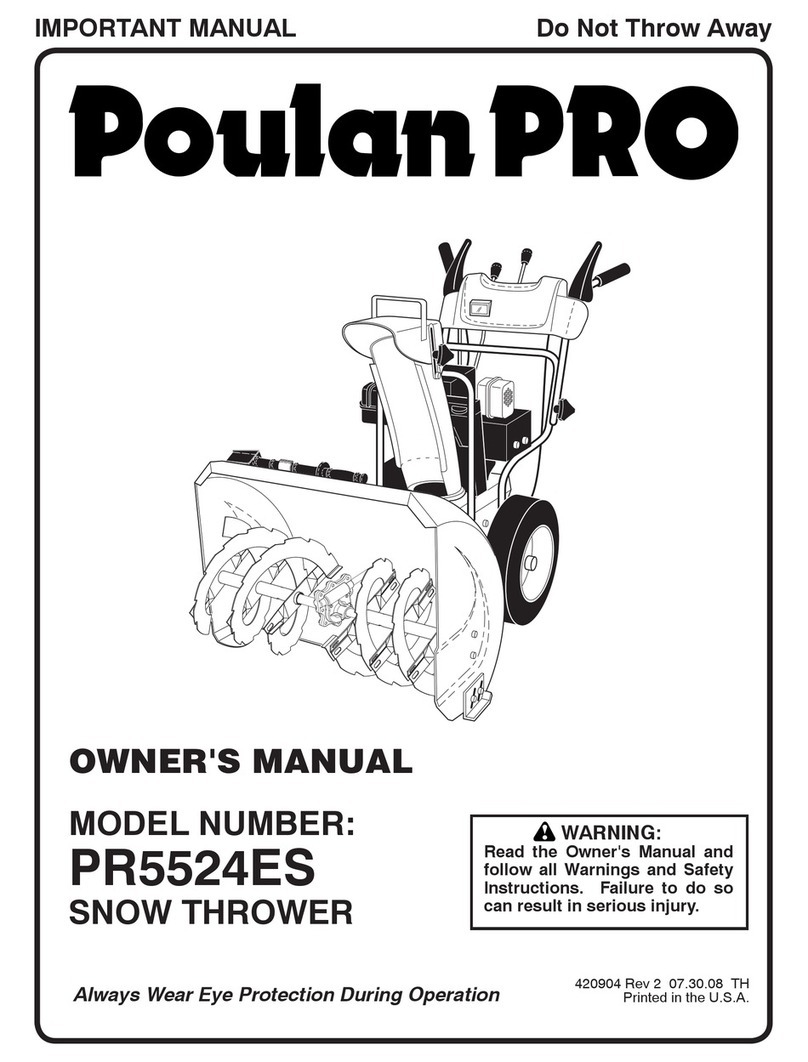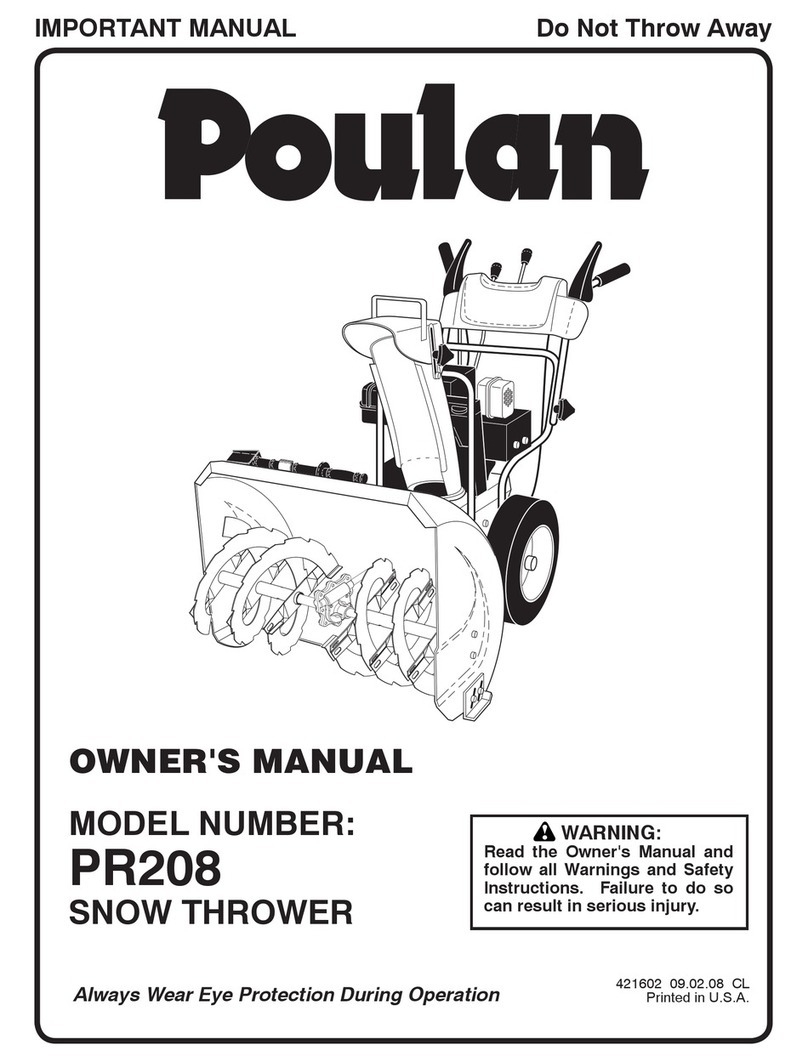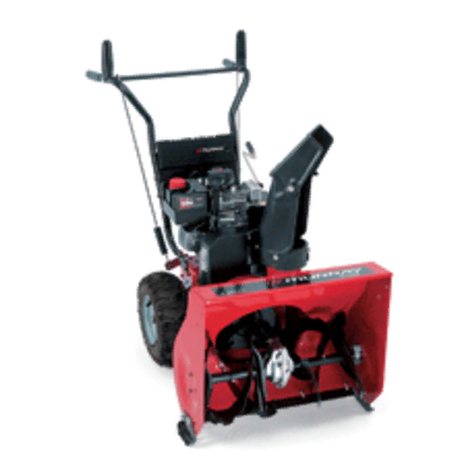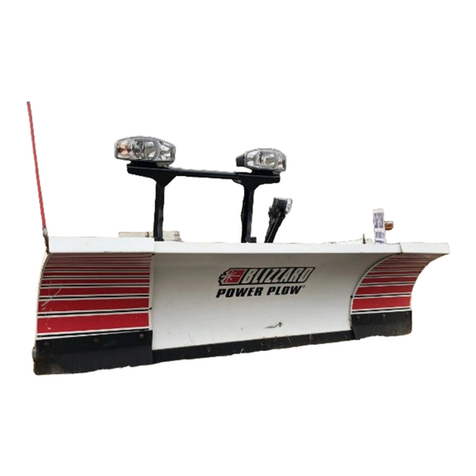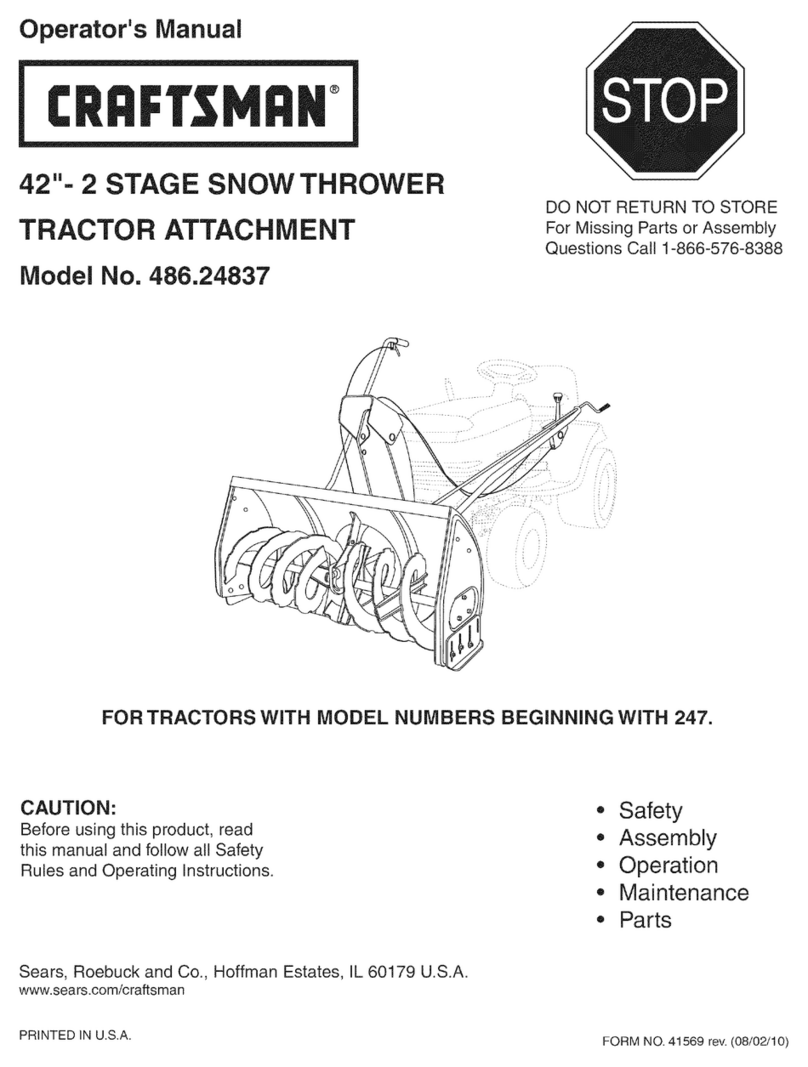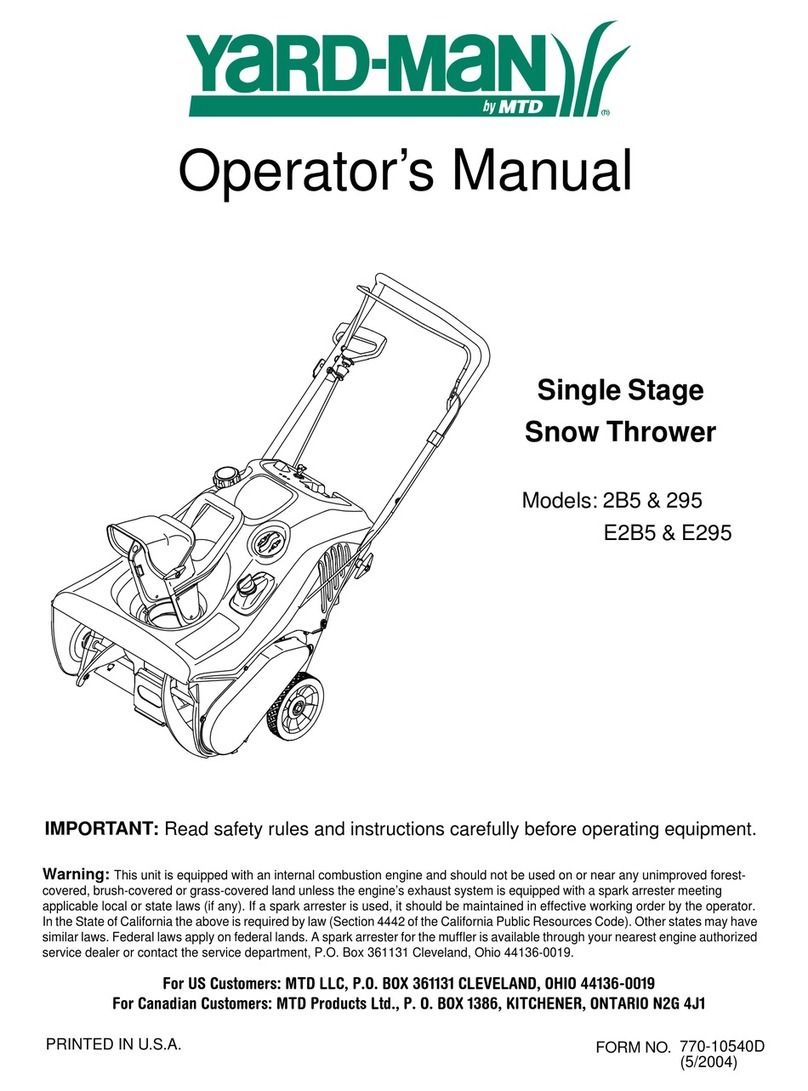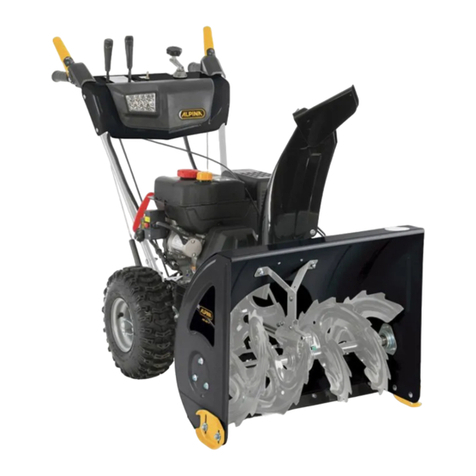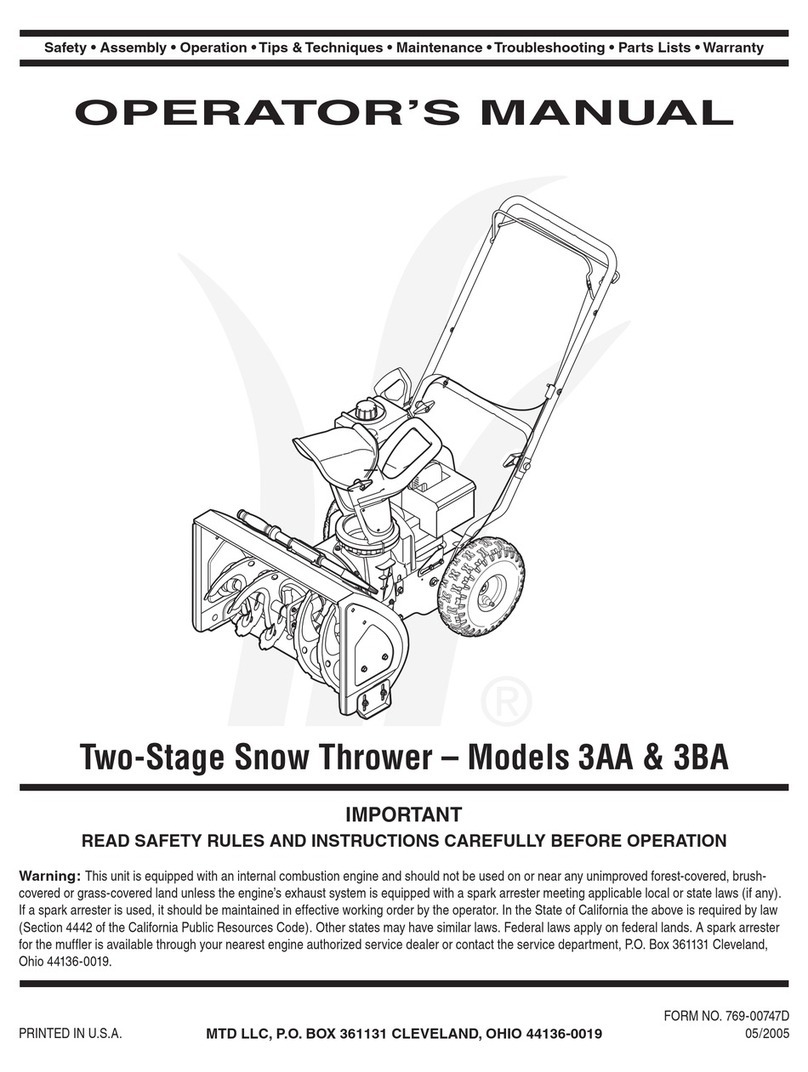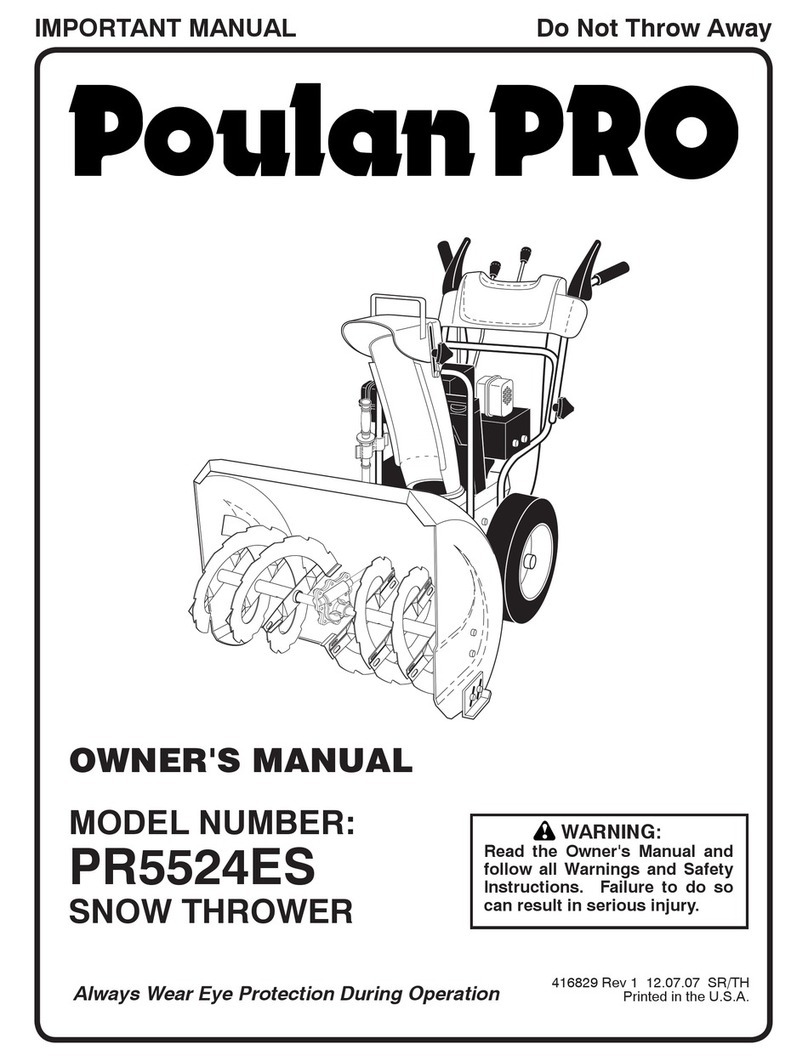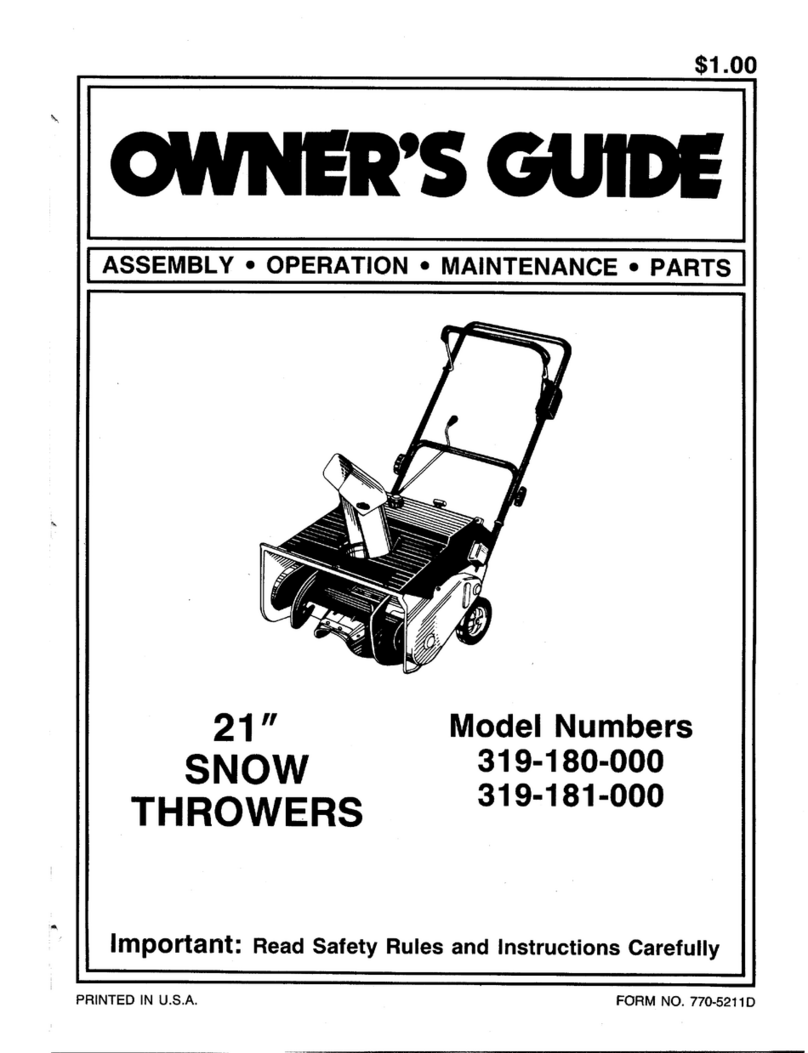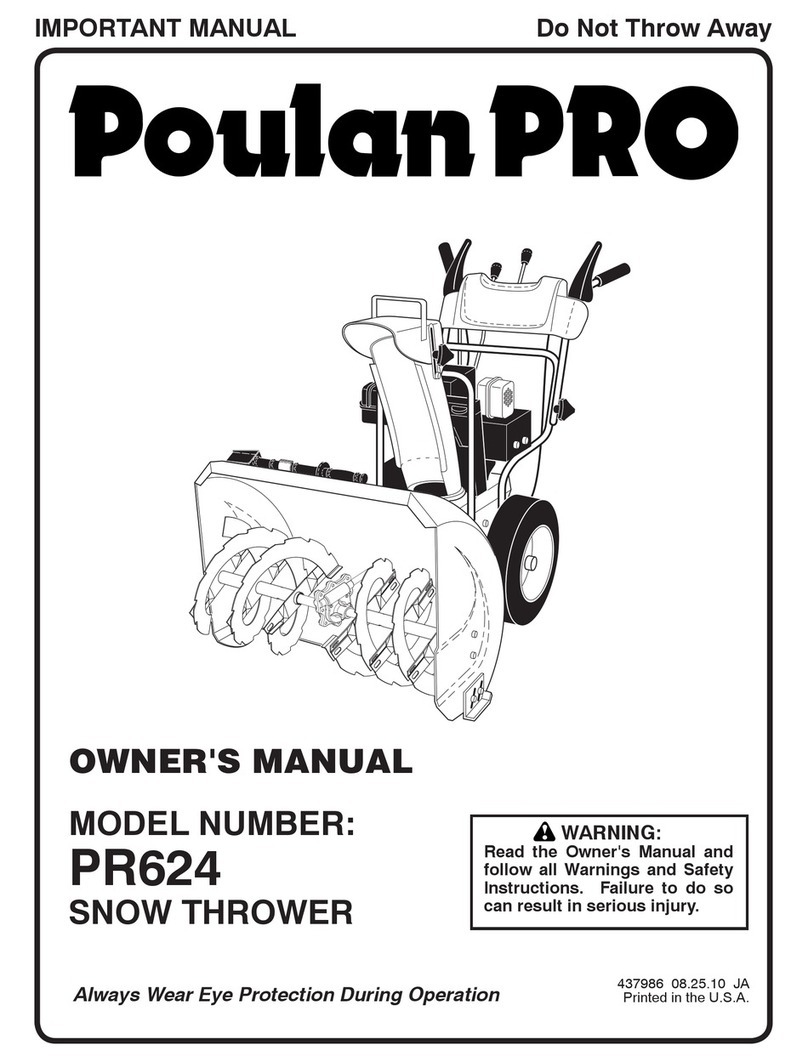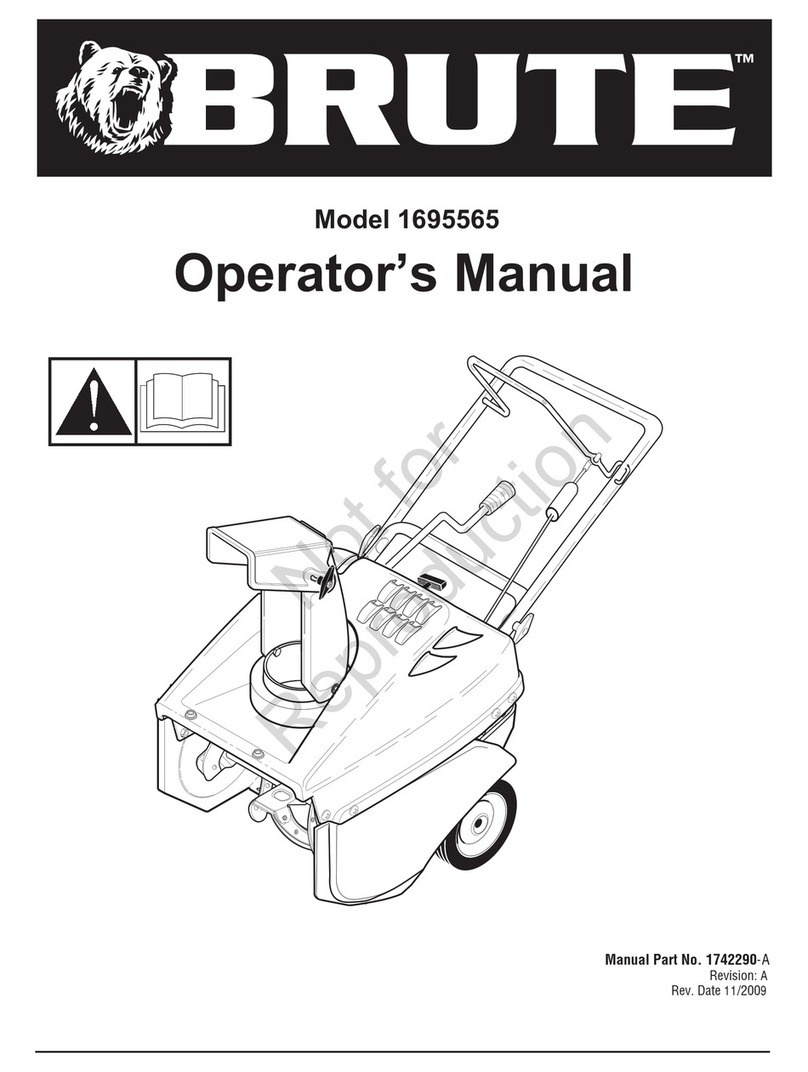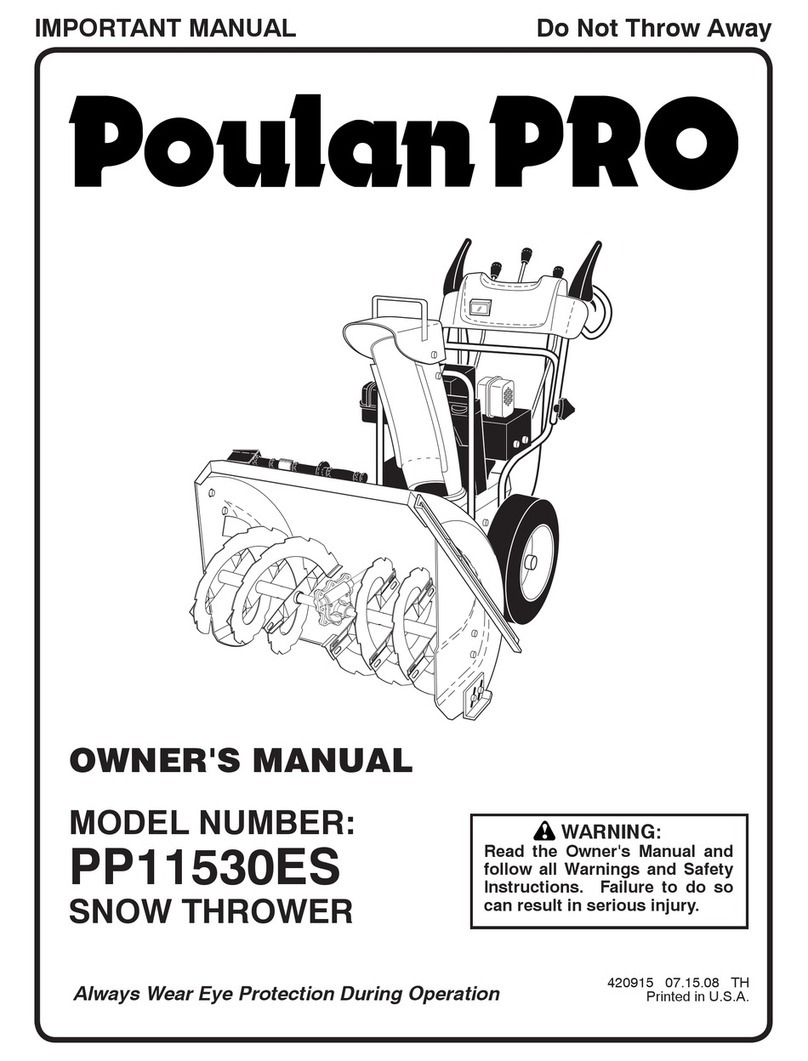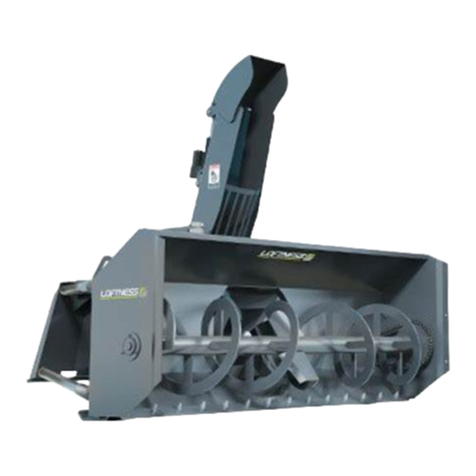FMC Bolens 625 Guide

"FMC BOLENS
<MK3
<?MG
<?MG
<?MG
<?MG
<M]<3
SNOW THROWER
MODELS 524
625
826
<?!
<?l
<?!
<?!
SAFETY AND
OPERATION
INSTRUCTIONS

CONGRATULATIONS!
You now own one of the finest lawn and garden tools available.
Your BOLENS product has been carefully designed and manufactured for
top performance and dependability. Take proper care of your equipment
and you will be repaid with lasting service.
Study this manual before you operate your equipment. Know the operating
procedures and safety precautions. Remember the more you know about
your BOLENS product, the better it will perform for you.
PLEASE FILL OUT QUESTIONNAIRE IN CENTER OF BOOK.

•FMC
This equipment is manufactured
by FMC Corporation, Outdoor
Power Equipment Division, 215
South Park Street, Port Wash-
ington, Wisconsin, 53074, tele-
phone 414-284-5521. If you have
any questions or encounter any
problems, which you feel only the
factory can solve, write to the
above address or phone, attention
the Service Department.
This is asafety, operational and
general maintenance manual only
and does not cover major re-
pair. All major repair work dur-
ing the warranty period must be
performed by an authorized
FMC BOLENS DEALER or the
factory warranty is void. Bolens
equipment is carefully engi-
neered to give good perform-
ance if properly operated and
maintained. Keep your equip-
ment clean and lubricate it as
prescribed in this manual.
Periodically inspect your unit
and perform any upkeep main-
tenance necessary.
All Bolens equipment have
passed rigid safety
specifications published by
the American National
Standards Institute
(sponsored by the Outdoor
Power Equipment Institute-
O.P.E.I.) and have been
certified as complying by an
outside independent testing
laboratory.
THE AUTHORIZED DEALER will
repair or replace any parts
which fail due to defective
material or workmanship
during the warranty period.
He will also provide
continuing repair service
and supply factory replace-
ment parts.
CONTACT YOUR DEALER FOR
ANY REPLACEMENT PARTS OR
SERVICE NEEDED. DO NOT RE-
TURN PARTS DIRECTLY TO THE
FACTORY. THE FACTORY RE-
QUIRES PRIOR APPROVAL ON
RETURNS, AND APPROVALS ARE
ISSUED ONLY TO BOLENS
DEALERS OR DISTRIBUTORS.
READ YOUR WARRANTY
STATEMENT AND BE SURE THE
POSTPAID WARRANTY REG-
ISTRATION CARD IS MAILED TO
THE FACTORY.
TABLE OF CONTENTS
General Safety Precautions . . .4Before Operation ....... 11 Care and Maintenance ..... 14
Serial Numbers . . 5Operation .... 12 Electric Start Kit .... .. . 17
Know Your Snow Thrower ...6 Troubleshooting ....... 13 Optional Equipment .....20
Assembly ..6Storage ...21
Snow Throwing Tips .... .10 End of Season Storage ...21
BE ASAFE OPERATOR
AVOID ACCIDENTS
To read reports from all over the country is to be convinced that alarge number of accidents can be prevented only
by the operator anticipating the result before the accident is caused and doing something about it. No power equip-
ment can be safer than the man who is at the controls. If accidents are to be prevented -and they most certainly can
be prevented -operators must accept their full measure of responsibility.
It is true that the designer, the manufacturer and the safety engineer can help, but their combined efforts can be
wiped out by asingle careless act.
It is said that “the best kind of safety device is acareful operator.” We ask you to be that kind of person.
NATIONAL SAFETY COUNCIL
Form No. 552923 5/75
3
PRINTED AT FMC CORPORATION, OUTDOOR POWER EQUIPMENT DIVISION

GENERAL SAFETY PRECAUTIONS
A
CAUTION
PREVENTING ACCIDENTS IS YOUR
RESPONSIBILITY. BE SURE YOU
UNDERSTAND AND OBSERVE THESE
SAFETY PRECAUTIONS. NEVER
TAKE CHANCES. REMEMBER,
ACCIDENTS CAN BE PREVENTED.
TRAINING
1. Read the owner's guide
instruction manual carefully.
Be thoroughly familiar with
the controls and proper use
of the equipment. Know how
to stop the unit and disen-
gage the controls quickly.
2. Never allow children to
operate equipment. Never
allow adults to operate
equipment without proper
instruction.
3. Keep the area of opera-
tion clear of all persons,
expecially small children
and pets.
4. Exercise caution to
avoid slipping or falling,
especially when operating
in reverse.
PREPARATION
BEFORE YOU USE
YOUR SNOW THROWER
1. Thoroughly inspect the
area where the equipment is
to be used and remove all
door mats, sleds, boards,
wires and other foreign
objects.
2. Disengage all clutches
and shift into neutral
before starting engine or
motor.
3. Do not operate equipment
without wearing adequate
winter outer garments. Wear
footwear which will improve
footing on slippery
surfaces.
4
4. Handle fuel with care,
it is highly flammable.
(A) Use approved fuel
container.
(B) Never add fuel to a
running engine or hot
engine.
(C) Fill fuel tank outdoors
with extreme care.
Never fill fuel tank
indoors.
(D) Replace gasoline cap
securely and wipe up
spilled fuel.
5. Use agrounded three
wire cord and plug-in for
all units with electric
drive motors or electric
starting motors.
6. Adjust collector housing
height to clear gravel or
crushed rock surface.
7. Never attempt to make
any adjustments while engine
or motor is running (except
where specifically recom-
mended by manufacturer).
8. Let engine and machine
adjust to outdoor tempera-
tures before starting to
clear snow.
OPERATION
1. Do not put hands or feet
near rotating parts. Keep
clear of discharge opening
at all times.
2. Exercise extreme caution
when operating on or
crossing agravel drive,
walks, or roads. Stay alert
for hidden hazards or traffic.
Do not carry passengers.
3. After striking aforeign
object, stop the engine
(motor), remove wire from
spark plug, thoroughly
inspect the snow thrower for
any damage, and repair the
damage before restarting and
operating the snow thrower.
4. If the unit should start
to vibrate abnormally, stop
the engine (motor) and check
immediately for the cause.
Vibration is generally a
warning of trouble.
5. Stop engine (motor)
whenever you leave the
operating position, before
unclogging the collector/
impeller housing or discharge
guide, and making any
repairs, adjustments or
inspections.
6. Take all possible
precautions when leaving the
vehicle unattended. Disen-
gage the power take-off,
lower the attachment, shift
into neutral, set the parking
brake, stop the engine, and
remove the key.
7. When cleaning, repairing
or inspecting make certain
collector/impeller, and all
moving parts have stopped.
Disconnect spark plug wire
and keep wire away from plug
to prevent accidental
starting. Disconnect cord on
electric motors.
8. Do not run engine
indoors, except when starting
engine and for transporting
snow thrower in or out of
building. Open outside doors,
exhaust fumesare dangerous.
9. Do not clear snow across
the face of slopes.
Exercise extreme caution
when changing direction on
slopes. Do not attempt to
clear steep slopes.
10. Never operate snow
thrower without guards,
plates, or other safety
protective devices in place.
11. Never operate snow
thrower near glass enclosure,
automobiles, window wells,
drop-off, etc., without
proper adjustment of snow
discharge angle. Keep
children and pets away.
e
o

?
GENERAL SAFETY PRECAUTIONS (Continued)
•FMC
2. Never store machine with
fuel in the fuel tank inside
abuilding where open flame
or spark are present. Allow
engine to cool before storing
in any enclosure.
3. Always refer to owner's
guide instructions for
important details if snow
thrower is to be stored for
an extended period.
12. Do not overload machine
capacity by attempting to
clear snow at too fast a
rate.
13. Never operate machine at
high transport speeds on
slippery surfaces. Use care
when backing.
14. Never direct discharge
at bystanders or allow anyone
in front of unit.
15. Disengage power to
collector/impeller when
transporting or not in use.
16. Use only attachments
and accessories approved by
manufacturer of snow thrower
(such as wheel weights,
counter weights, cabs, etc)
1
7.
Never operate the snow
thrower without good
visibility or light. Always
be sure of your footing and
keep afirm hold on the
handles and walk, never run.
MAINTENANCE AND STORAGE
1. Check shear bolts,
engine mounting bolts, etc.
at frequent intervals for
proper tightness to be sure
equipment is in safe working
condition.
4.
Run machine afew minutes
after throwing snow to
prevent freeze up of
collector/impeller.
SERIAL NUMBERS
For prompt service when
repairs or adjustments are
required, your AUTHORIZED
FMC BOLENS DEALER must have
identification numbers
listed below. Fill in the
spaces now for quick
reference.
Snow Thrower Model Number
Snow Thrower Serial Number
Engine Model Number
Engine Serial Number
Engine Spec. Number
Date of Purchase
The AUTHORIZED FMC BOLENS
DEALER has aparts list for
your snow thrower. He can
identify and supply any
parts you require.
Contact the engine manufac-
turer's authorized dealer
when engine parts are needed. 5
This manual suits for next models
2
Table of contents
